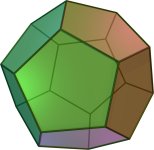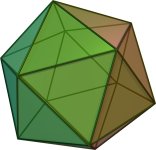Are you tops TL-style enclosures like a mid-TL or are this closed cabinets?I find my rising top end a little harsh so I've added a slight slop starting at 9k, other than that my alpair 10.3s do great until they get lower so I went with a fast tower setup, the full ranges cover everything above 300 so they still have their point source magic. But yeah I agree most full range speakers could use some help, with that said they are super easy to pair with other drivers, cool build
Two stacked fullrange 5" (really 4.5) run XO-less in series: upper 4ohm Michael Audio "drum paper" in 6L labyrinth (slot-loaded); lower 8ohm Correct P-610 variant in 17L up-firing tower (was subwoofer) with bottom port. BR/BR cabs punchier; folded (using divider boards) tapered-TL/ML-TQWT cabs more perfect. I don't know what "transcient-perfect" means exactly, but to my ears this LX-like pairing deserves that adjective. Speed and clarity of ESL; linear dynamic articulation of Axiom80 (alas from memory); an order more musical detail than beryllium headphones; natural realism. Reproduces live concert (acoustic instruments and vocal) front-row center for domestic ultra-fi listening, not intended for PA.
This was not exactly serendipity. The drivers appear to have identical basket construction i.e. came from the same factory/line, but are exact opposites in spec and response. Nor found by luck -- about fifteen years ago I had stacked Fostex F120A and Monitor Audio 2.5, respectively convex/concave frequency response curves. Same with the micor55. I had both drivers on the front baffle before, but lately up-firing "omni" really caught my fancy. One listen with the LX-like configuration and I was totally blown away!
In my demented/demerit scoring: -1 (hi/mid/lo) A+/A+/A.

This was not exactly serendipity. The drivers appear to have identical basket construction i.e. came from the same factory/line, but are exact opposites in spec and response. Nor found by luck -- about fifteen years ago I had stacked Fostex F120A and Monitor Audio 2.5, respectively convex/concave frequency response curves. Same with the micor55. I had both drivers on the front baffle before, but lately up-firing "omni" really caught my fancy. One listen with the LX-like configuration and I was totally blown away!
In my demented/demerit scoring: -1 (hi/mid/lo) A+/A+/A.
Last edited:
My smartphone Xiaomi 9 (flagship in its day) has a sophisticated built-in hearing test coupled with EQ on the headphone output, and here's the result (thrice repeated only differ at the far right from head positioning). I'm sixty. Tone sweep sounds jaw-dropping flat over my hearing range except 90-100hz ripple.
The Mi9 is technically more hi-fi but I still prefer the music from the Huawei P10plus. OCC interconnect 3.5mm to TPA3221 on steroids; Mi9 with additional Choseal USB-C to 3.5mm passive adapter. Graphite feet between cabs help.

The Mi9 is technically more hi-fi but I still prefer the music from the Huawei P10plus. OCC interconnect 3.5mm to TPA3221 on steroids; Mi9 with additional Choseal USB-C to 3.5mm passive adapter. Graphite feet between cabs help.
When I direct-connect of course the EQ is applied (if saved/named/turned on); however the sound quality may be (heard) affected at very high treble (grainy) at least through headphones. Adapter and wire make a big difference so I need to re-test this. Bluetooth also to be tested for EQ but normally I shy away from BT.Interesting. Can you cast the audio to your stereo system and hear if it does that there, too?
When I built these Bourbon Barrel Satellites, I wanted to “channel” Brandon. He loves bourbon. And since he’s got enough personality for five people, I asked myself, "If Brandon was a speaker, what kind of speaker would Brandon be?" The result was these. 10" subwoofer in a bourbon barrel, 3.5" Tang Band W3-871SC drivers in back loaded horn.

This is my interview at Parts Express 2023 Speaker Design Competition:

Design details at https://www.diyaudio.com/community/threads/bourbon-barrel-speakers.412383/
This is my interview at Parts Express 2023 Speaker Design Competition:
Design details at https://www.diyaudio.com/community/threads/bourbon-barrel-speakers.412383/
Do you wager this type of technique could be utilized for avoiding combing in the following case:The thing I'm most proud of is the RC network that shades the signal to each of the 12 drivers differently, which is a solid family of curves. It ensures that all 12 drivers equally share the bass load below 100Hz while shifting the treble to the lower drivers to achieve the desired polar pattern above 500Hz. This also eliminates most of the comb filtering that you get with arrays:
View attachment 1304558
FR drivers centered on the faces of a regular tetrahedron, aiming for omni-directionality as high up as possible.
The diameter of a circumscribed sphere inside the tetrahedron gives the spatial separation of the four drivers, and this length corresponds to the wavelength of the frequency above which combing would start to appear. To avoid combing I'd either have to greatly low-pass three of the drivers not facing the listener and essentially not achieve much omni-directionality at all (for 50cm side length tetrahedron the cutoff'd be about 1.5kHz and a -6dB there might not suffice, would possibly need steeper)... or maybe something akin to that network, so not so much limiting but shifting the signal across the drivers.
There is no way to do this and achieve high frequencies without comb filtering, or else rolling off some of the drivers and therefore not omnidirectional anymore. There's a long history of people doing something similar with dodecahedrons (20 sides) and the like, and you can investigate that history.
The thing with dodecahedra is that by nature they are awful for omni due to strong peaks and dips in a lot of directions.There's a long history of people doing something similar with dodecahedrons (20 sides) and the like, and you can investigate that history
Here's a study indicating the tetrahedron as the best all-rounder out of the Platonic solids: https://physics.byu.edu/docs/publication/793
Sadly it does seem there's just no way to avoid combing, though maybe the filtering could be notch-type to take away just the worst combing frequency range from 3 drivers and keep the HF from where it beams enough to not interfere.
There is no way to do this and achieve high frequencies without comb filtering
Yheoretically, as one moves from a 4 sided regular polygon (the tetrahedron) to larger numbers (the 12-sided dodecahedron) and the 20-sided icosahedron) of faces, and the use of smaller drivers with closer spacing, the point at which combing becomes too large rises in frequency and if one takes the limit, you get a "pularating sphere”, and no combing.
At some point in taking that limit one should come across a high frequency that is sufficient for domestic use with the room confounding any combing.
dave
Here's a study indicating the tetrahedron as the best all-rounder out of the Platonic solids:
Intersting paper, a skin suggests that there some details to dig out and analyze. The dodecahedron is just slightly ahead of the isocsohedron in terms of HF cutoff, the tetrahedron the lowest, so why they pick the tetrahedron will be interesting. It is hinted that teh smaller the polyhedra, the greater the HF cutoff.
I have the bits to build a pair of icosohedron with the Foster version of 35mm Harmon driver Keele used (out of eMacs).
Here is a recent pro design (noise source) that is a dodecahedron: https://www.norsonic.com/products/noise-sources/nor283-dodecahedron-loudspeaker/
The chart of the radial response will be of interest and shows combing happening.
dave
I meant that the tetrahedron has the least kinks in its pattern overall. While the EM dodecahedron is really smooth at 2kHz, it becomes really shaped at 4kHz. The tetrahedron is on average closest to spherical.so why they pick the tetrahedron will be interesting
They tout the advantage of the tetrahedral shape as how it deals with the internal waves, there's no parallel surfaces and the driver is facing an internal vertex.
I discussed the benefits of the latter point with Danny Richie, he was of the opinion that whatever funnel-like shape you have behind a driver, be it a tetrahedron's internal vertex or something like the B&W Nautilus, the same effect for backwaves could be achieved with damping materials alone. Maybe it could... But I think there's beauty in the shape itself having such an acoustical benefit.
otable lobing patterns, combing in itself?
it is the affect of lobing on the FR.
dave
tetrahedral shape as how it deals with the internal waves, there's no parallel surfaces and the driver is facing an internal vertex.
That makes sense, but weren’t we talking about the outside.
Danny Richie
Not someone i pay attention to. XRK’s dagger is much the same, i prefer midTLs.
dave
- Home
- Loudspeakers
- Full Range
- Full Range Speaker Photo Gallery

